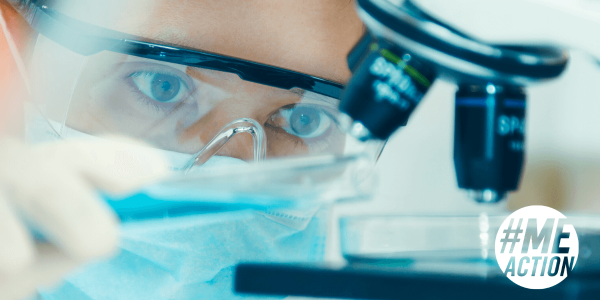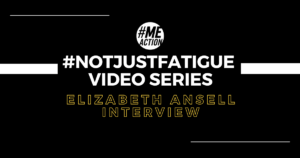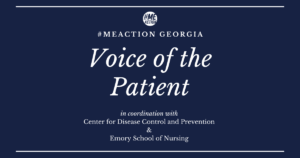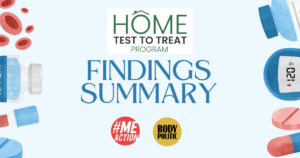On April 13, NIH announced two new funding opportunities for ME/CFS research:
- PAR-20-165, Research on Myalgic Encephalomyelitis/Chronic Fatigue Syndrome (ME/CFS) (R01 Clinical Trials Not Allowed)
- PAR-20-168, Research on Myalgic Encephalomyelitis/Chronic Fatigue Syndrome (ME/CFS) (R21 Clinical Trials Not Allowed)
What is an R01? What is an R21?
R01 and R21 are two common types of funding mechanisms at NIH. Researchers can submit a grant to fund a study using either of these two funding mechanisms.
An R01 grant requires some prior research and evidence to support the theory being tested (preliminary data). It supplies funding for a successful applicant up to five years, and can have a total funding over $1M USD. Program announcements for R01s are created with the aim of developing a field or area of study. There are three submission dates each year, and R01s accept applications for three years, meaning there are nine opportunities to submit. R01 grants also provide special considerations to young and early-stage investigators.
R21 grants fund research that is in some way new or innovative, and does not require preliminary data — although including some is always a good idea! As such, they run for a shorter time and provide less funding, capping at $275K USD. R21s also accept applications for three years with three due dates per year. No preference is given to beginners in R21 grants: their applications are compared to those of experienced researchers.
Will ME research get more funding because of these announcements?
Not necessarily.
Funding is not guaranteed by the existence of a program announcement. It’s possible that NIH will report that they receive few applications or poor applications and decline to fund any new studies.
Is there an advantage to a program announcement, in that case?
There are several, concrete benefits to these program announcements:
1) They will help peer reviewers compare ‘apples to apples’.
Consider two applications given to the same peer reviewers: one to study Parkinson’s Disease, one to study ME. The reviewers may have no experience with ME at all. If they are familiar with ME, they may be familiar with a biased narrative.
Moreover, because ME has been stigmatized and underfunded, there is a paucity of large, robust studies. ME researchers will nearly always have less support for our scientific arguments than those who study more well-researched diseases.
A program announcement levels the playing field. Applying to one of these program announcements means that all applications will be directed to the NIH’s special emphasis panel for ME, which will compare ME applications to other ME applications. Moreover, this means it’s far more likely that peer reviewers will be ME-literate. The last panel (2019), for example, included Dr. Susanne Vernon, Dr. James Baranuik, and Dr. Maureen Hanson.
2) It signals to the research community that NIH is specifically soliciting ME applications.
Program announcements send a message that NIH is looking for ME-related projects to fund. Despite the fraught relationship the ME advocacy community has had with the NIH, this is how the program announcement will be viewed from the outside. That has value, including the potential to bring new researchers into the field.
3) A proposal cannot be dinged merely because ME is the topic.
Multiple times I have heard researchers state that peer review comments showed bias against ME in previous years, leading to a lower score. People on the special interest panel will only be looking at other ME proposals, making this a nonsensical argument. NIH has specifically asked for research proposals about ME, and researchers who submit them are following instructions!
In May 2018 #MEAction sent a letter signed by over 7,000 people, calling on Francis Collins at NIH to take 11 actions in the next 12 months, one of which was to issue ME-specific program announcements like these — yet it took NIH two years to take this first step. They must do far more to bring ME research and funding to parity, as we laid out in our letter to NIH last fall.
However, these program announcements are a victory for research and for advocacy, and we are hopeful that researchers will use this time stuck at home to craft some applications.
We reached out to Dr. Vicky Whittemore at Neurological Disorder and Stroke (NINDS) to ask if she had any advice for applicants. She stated that researchers should reach out to the contact people listed on the program announcements for guidance in crafting their applications.
“NIH staff are happy to talk with any potential applicant regarding their grant applications…. If you’re not sure who to contact, you can contact me and I am happy to help you.”
You can find out more about these program announcements by clicking on the links below.







1 thought on “NIH announces two new funding opportunities for ME”
It’s good to have PA’s back up again. I want to point out, though, PA’s were commonly updated for many years when funding was at its lowest and had no effect at on it. Then they disappeared for several years. Now they’re back – which as the article states is a good thing – it’s good to have the NIH specifically state they’re looking for ME/CFS research.
They were never enough to actually increase funding levels before. On the other hand, applications for ME/CFS research did reach dramatic lows during the years when the PA’s disappeared. As the NIH has pumped money into the research centers, individual researcher funding has, as Jennie Spotila has pointed out, actually declined. Perhaps it’s possible that having the PA’s again will boost applications. Let’s hope!
Comments are closed.